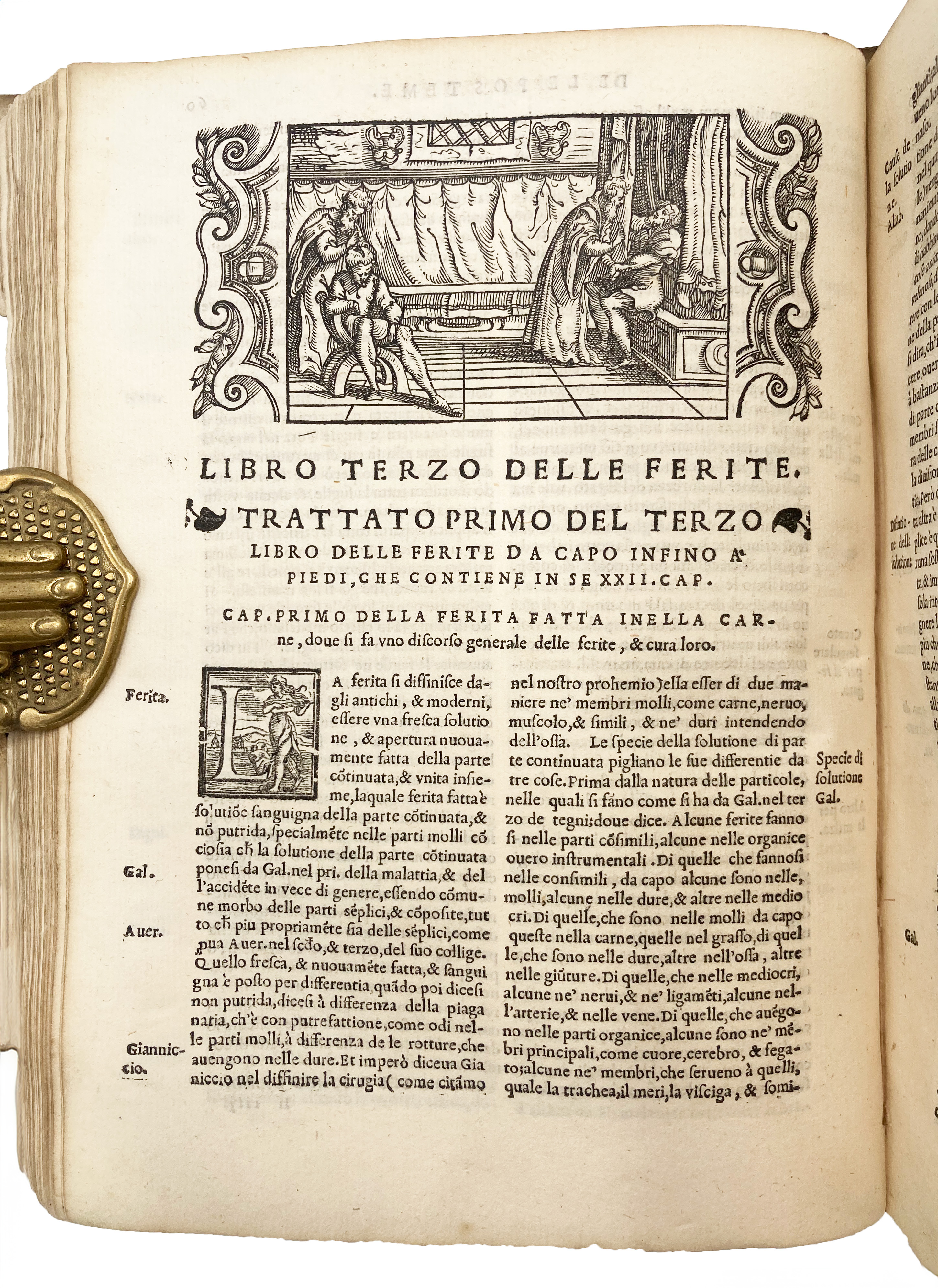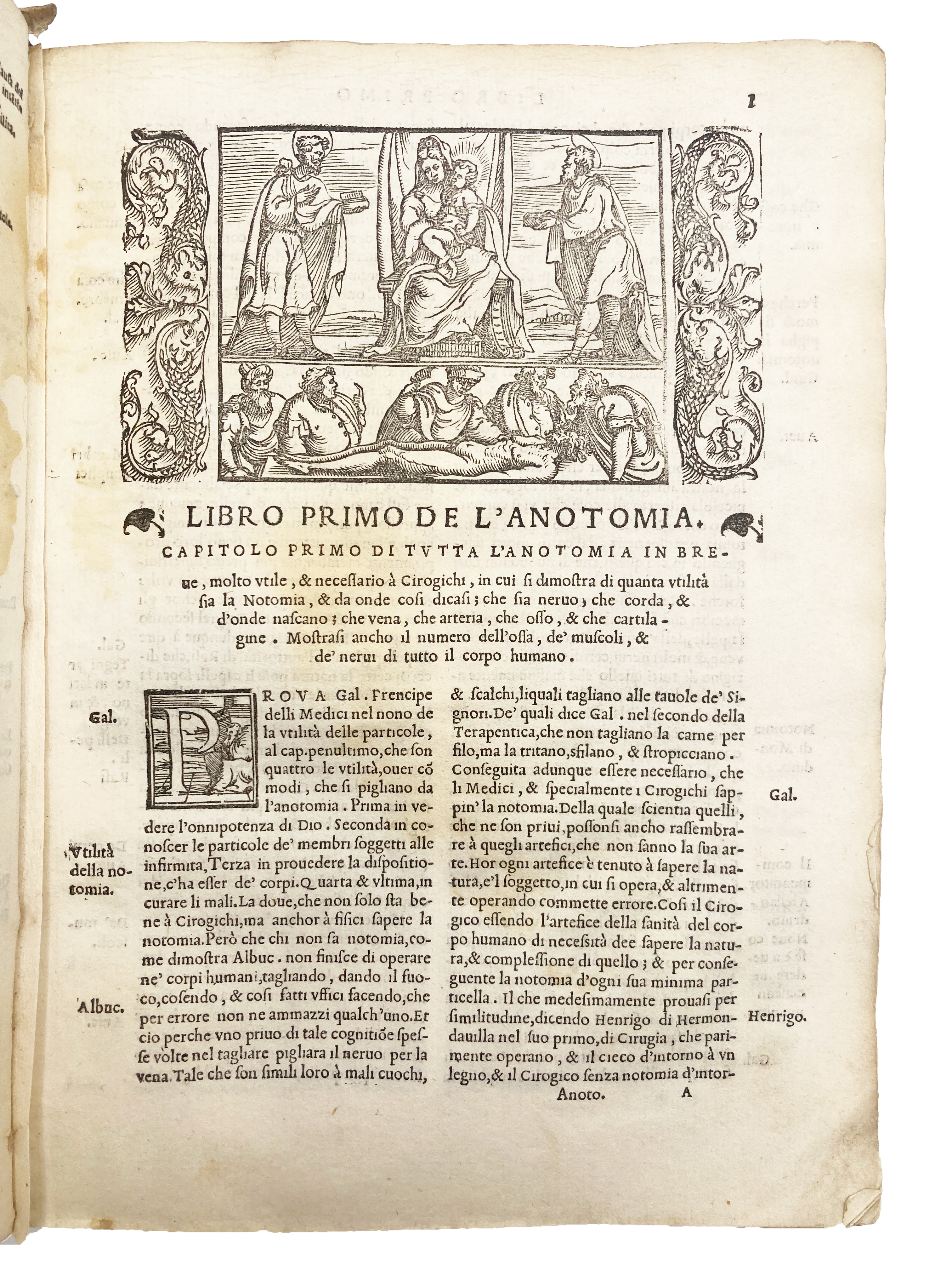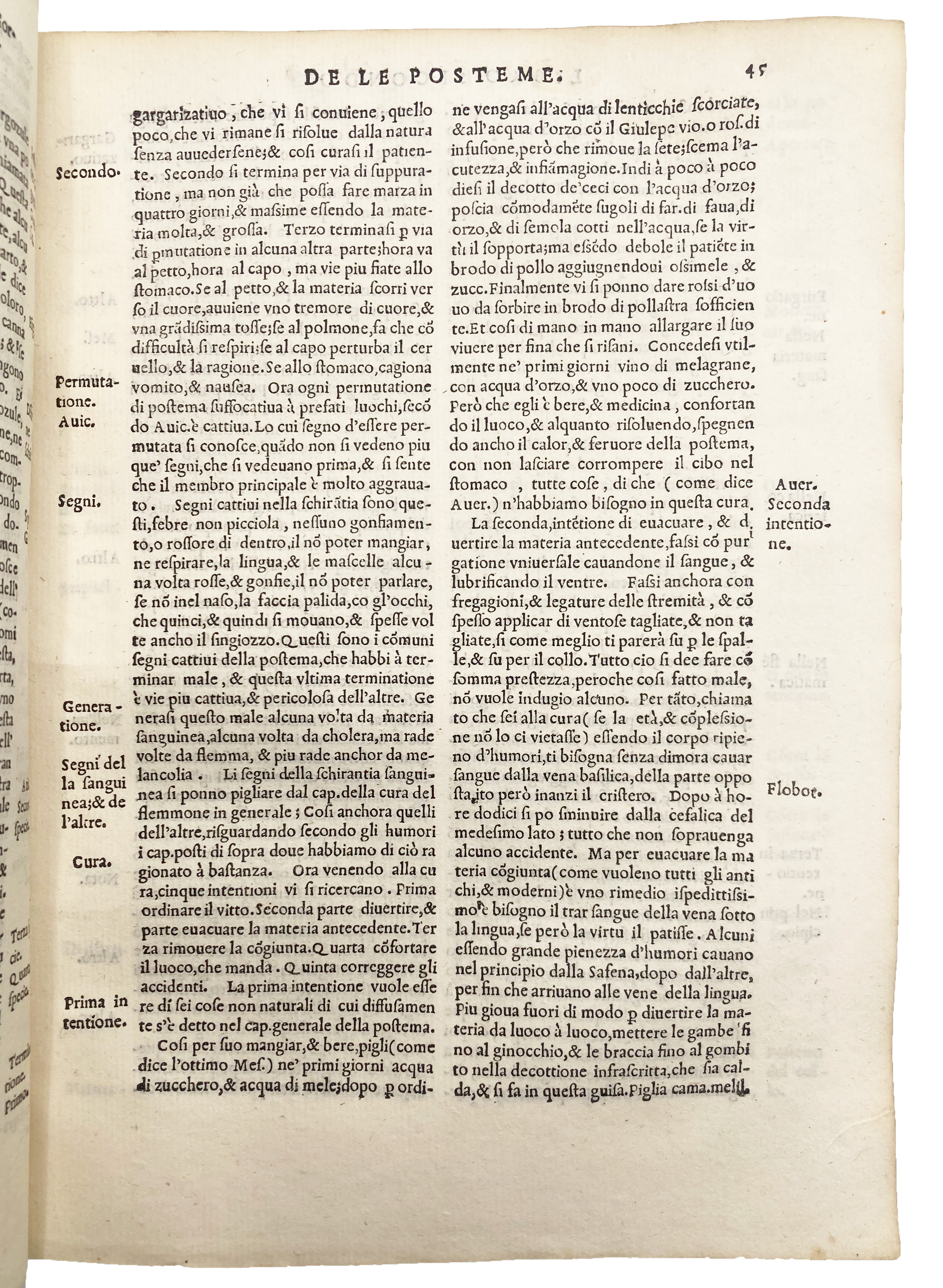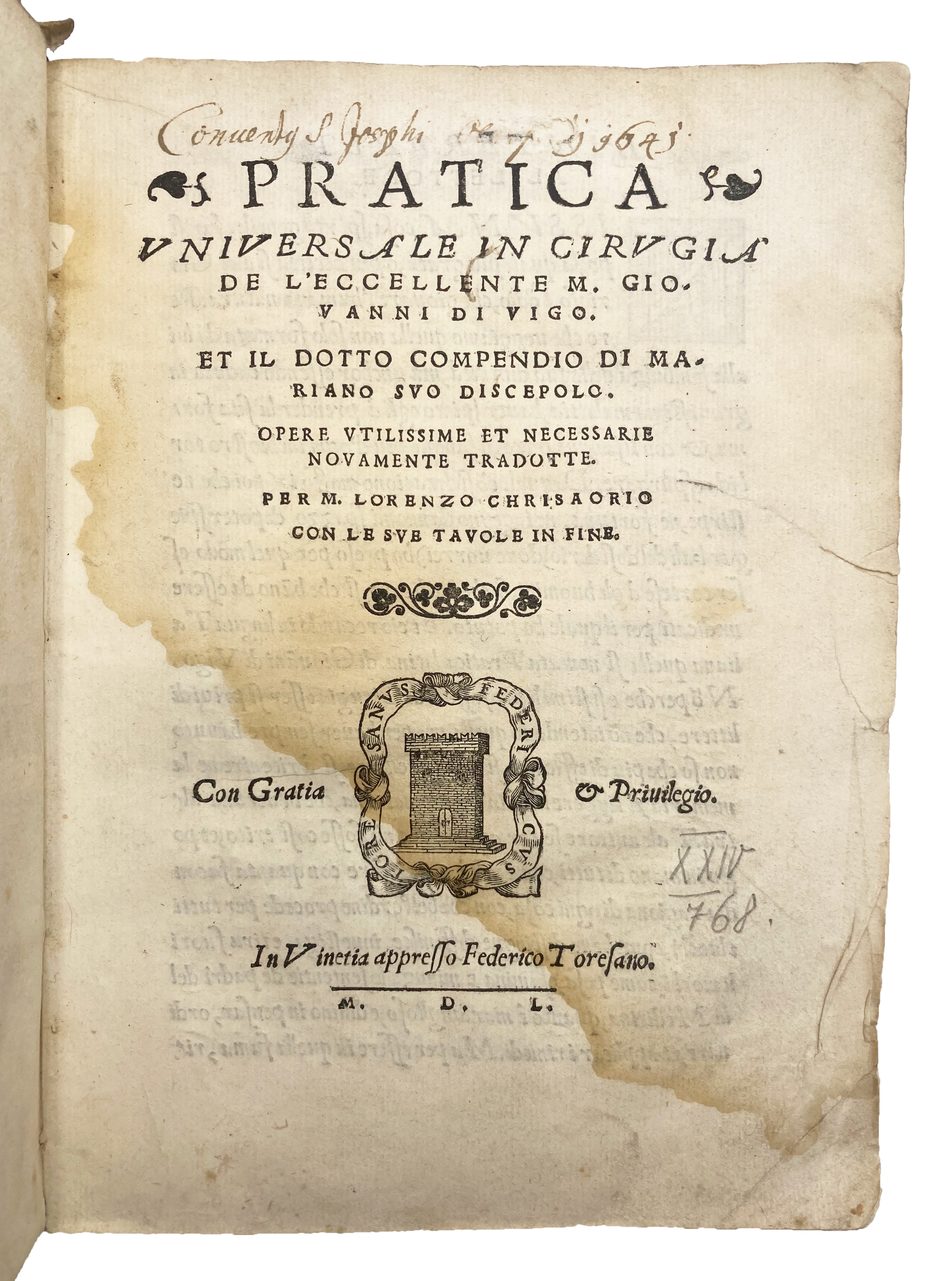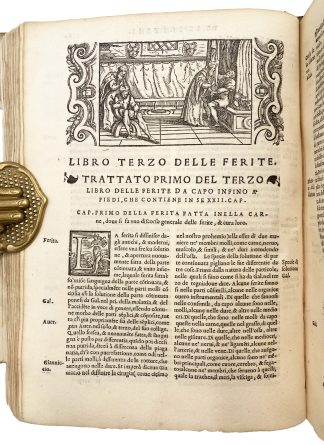VIGO, Giovanni da.
EARLY TREATMENT OF GUNSHOT WOUNDS AND SYPHILIS
Pratica universale in cirugia.
Venice, per Pietro de Nicolini da Sabio ad instantia Federico Toresano, 1550£4,950.00
4to. ll. (iv) 258 (iv). Roman letter, double column. Woodcut printer’s device to t-p. 10 1/3 page woodcut illustrations showing surgical scenes commencing each book, woodcut borders. Woodcut initials and diagrams to text, typographical ornaments. Contemp. limp vellum, stained and with loss from joints and edge of upper wrapper, traces of contemp. inscriptions, one in a humanist hand, contemp. and later ms. spine titles, fragment of medieval ms. of Priscian’s Ars Grammaticae, Book II, used as spine guards, in an attractive probably C13th Italian minuscule, rubricated. Occasional contemp. marginal annotations, two contemp. one-line inscriptions to ffep, possibly page refs, later inscription of Heneage Wynne Finch. Large light waterstain to t-p and diminishingly first few quires, very light foxing to a few ll. at end, the occasional marginal mark. A good unsophisticated copy in its original binding.
Extremely rare second Italian edition, first published 1549, of this treatise on surgery by Giovanni da Vigo (1450-1525), physician to Pope Julius II. The delightful woodcuts, which act as chapter headings, show physicians conducting dissections (presided over by the Virgin Mary and saints), inspecting a patient with an ulcer, setting a broken leg, trepanning and bloodletting, and making medicinal decoctions, with a depiction of one being drunk by a syphilitic patient. Vigo’s work was one of the few before the Dix livres de la Chirurgie of Ambroise Paré (1564) to deal with gunshot wounds and contained an early account of syphilis, its causes and treatment.
The text begins with a catalogue of anatomical terms and descriptions. There follows a long disquisition on swelling and abcesses of different kinds, hot and cold, etc., and how these can be reduced surgically. A chapter on treating wounds, including trauma wounds, follows. There are then chapters on ulcers, syphilis, fractured and dislocated bones, the production of medicinal simples, composites, and antidotes. At the end is a brief work intended for use by medical students, the Compendio cirurgia utilissimo a studiosi by Mariano Santo (1488-1577), with sections on swelling, wounds, ulcers, etc., illustrated with diagrams.
The chapter on wounds describes wounds as they occur to various body parts, beginning with skull fractures, including in children. There is a section on removing arrows and treating arrow wounds, including when arrows have been poisoned. The section on gunshot wounds (f. 87r) opens with Vigo’s assertion that nothing has been written on the matter in ancient treatises (of course), but neither has it received treatment in any modern works. He divides wounds caused by guns and artillery into three kinds: trauma caused by bullets; burns caused by gunpowder ignition; and the toxicity of the wound. This last and erroneous assumption, which imagined that even once the bullet was removed there was the possibility of putrefaction from gunpowder, was what led Vigo to his unfortunate cure: cauterising the wound with boiling oil of the elder tree, which, in the following section, Vigo also suggested applying to infected animal bites. Paré would directly refute Vigo’s assumptions, especially regarding burns and the poisonous gunpowder, and advocated gentler treatments such as placing odoriferous rosewater and other pomades in the patient’s chamber.
Vigo’s treatise on syphilis attributes its appearance in Europe to the year 1494 and describes it as a contagious and sexually transmitted disease. He includes a discussion of its symptoms, including tooth decay, painful sores and swellings – he dedicates a whole section to the putrefaction of these sores, which can be fatal – joint pain and calcification of the bones. Vigo treats the disease as a poison that must be purged from the body and advises syrups, pills, baths and bloodletting.
OCLC records a single copy, at UCLA. The first ed. is also extremely rare, OCLC noting copies at UCSF, the NLM, and Staatsbibliothek Berlin. Not in Ren., Adams or BM STC It. Not in Heirs of Hippocrates, Osler, NLM or Wellcome. Not in USTC or EDIT 16.

